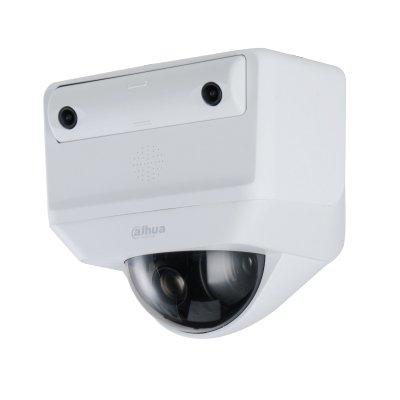Technology & Trends - Access control software
One leading company has developed an identity management system using patents that verify the identity of an applicant Most enterprises rely on background screening providers to report accurate and complete information without understanding the litigious landscape. Security executives often have little input in how background checks are performed or by what provider, as this has become the domain of human resources (HR). A growing trend finds employers and their backgroun...
In early 2016, dialogue between ASIS International in Europe and HID Global around access technology identified the need to take a closer look at why sometimes cutting-edge technology is not as effective as it should be in real world applications. Central to the issue were security gaps caused when elements are combined that do not match the same level of sophistication. This resulted in ASIS conducting a study amongst its European members with HID Global providing support o...
Smart buildings are on the rise around the world, not only because a growing number of companies are considering their environmental impact, but also because of the dramatic cost savings that can be realised through integration. In every building that has an integrated security and access control system, an opportunity awaits to also integrate the building’s energy use, water use, ventilation and more. The key is to effectively convey the tremendous potential of this new tech...
Organisations are moving to align their physical and digital security initiatives, especially in today’s more connected world Organisations must address growing security threats using fewer resources in an increasingly challenging regulatory environment. They are looking to ensure data security while also protecting their facilities’ physical security. At the same time, their users are demanding more choices of smart cards, smartphones, wearables, and other mobile...
The top influencing trends in the security industry at ISC West 2017 will be big data, cyber security and the Internet of Things More than a thousand companies will be showing off their latest and greatest technologies and services at this year’s ISC West in Las Vegas. With so much to look at and experience, will you be able to pinpoint the next big thing or things that will dominate the security market in 2017? A good way to predict those upcoming trends is to look at w...
Smartphones offer a new alternative to traditional physical access control form factors such as smart cards or fobs. Convenience is the most obvious benefit, but there are others. Here are some advantages of using smart devices for access control: 1. Less vulnerability to cloning when compared to magstripe or low-frequency proximity cards. Digital credentials and mobile IDs are securely stored and protected. 2. Longer-distance communication, which allows readers to be mount...
When most people think of the term artificial intelligence, science fiction films both old and new tend to come to mind. Whether it’s the military network Skynet becoming self-aware in The Terminator and wiping out the majority of mankind with nuclear weapons, or the hosts in Westworld developing consciousness and turning against their human masters, Hollywood tends to paint a grim picture of this area of technology. The reality is that artificial intelligence – or AI...
Customers are increasingly requesting both mechanical and electronic services for their doors In most buildings, security is a hybrid solution of both mechanical and electronic security products. Locksmiths take care of the mechanical door hardware and the integrators focus on the electronic security technology. However, for consumers, this traditional division of labour means they must deal with two different companies for the same door - one to design, install and service a...
The year of 2016 ended with Vanderbilt finalising the acquisition of Access Control Technology Ltd., which strengthened the company’s product portfolio and introduced an entirely new market segment to partners and customers in Ireland and the United Kingdom. ACT brings an existing cloud-based access control solution to Vanderbilt, thereby complementing the existing product mix. This new technology adds significant value to our customers in Europe, and we plan to deliver it to our customer...
Ongoing attacks on private networks drew attention in 2016. Most public were the Wikileaks and other privacy violations during the 2016 election cycle. Whether or not the information had a bearing on the election outcome will never truly be known, but one’s overall sense of privacy is shaken. In many ways, these attacks and other less publicised cybercrimes were the result of a perfect storm. Organisations struggled with the sheer volume and constantly changing threats from advanced malwa...
At the end of last year, we anticipated that data gathering and analysis would continue to be a strong trend, and that certainly proved to be the case in 2016. More and more organisations are seeing the value of the intelligence provided by diverse systems’ data. The number and variety of networked systems and devices – both security and non-security – continued to grow steadily in the last year, and the data these disparate sources create has proven highly...
As the whirlwind of 2016 quickly winds down, it is a good opportunity to look back at the significant trends from this year. As predicted, the industry experienced accelerated data growth, the continued convergence of security and IT, and the ever-expanding impact of the Internet of Things (IoT).Overall, 2016 was a good year. IT investments were strong and organisations rapidly adopted new data centre advancements such as hyper converged infrastructure (HCI) to help manage the huge influx of cri...
Predicting where or how security access trends would develop in 2016 was an educated guess at best. We did, however, forecast continued growth in the areas of wireless readers; smartphone usage as a credential; and more migration to web-based software/hardware solutions.In hindsight, we were not so far off the mark. Wireless security systems proved to be a growing option for extending an access control system and a practical solution for retrofits. Smart phone credentials gained popularity by fr...
After two decades of advances from simple visual ID badges to smart cards, standards-based access control systems and mobile ID solutions, the industry began entering its next new chapter in 2016. We began “mobilising” security to make it more pervasive and personalised, with a better user experience. We entered a new era of secure connected identities will not only make us safer but fuel innovation in how we work, shop and play. The industry began paying much closer attention to p...
The shift from wired to wireless access control was expected to gather pace in 2016—and that has happened. This year we at Assa Abloy surveyed a large cross-section of security professionals, seeking their insight into the changing market. Comparing our data with research we did in 2014 showed a clear trend towards wireless access control. Wireless access data Our 2014 survey found 23% of commercial properties using a wireless or hybrid wired/wireless access control s...
The winds of change have swept into the access control market in 2016. The hardware is transitioning away from being solely panel-based, software is rapidly moving to the cloud, and credentials are going mobile. It seems that the security access control world is finally waking up from its technological slumber, and 2017 will be an exciting time. These three major trends are feeding off one another and are driving the growth all around. IP and edge based systemsIn 2016, hardware companies like...
The economy positively impacted the security marketplace in 2016 as end users have been more willing to invest in new security systems or upgrade existing systems. Organisations are breaking down department silos as it has become clear that security impacts everyone. Companies are realising they need to do more with the data they have. Utilising security system data Access control, video management, identity management and visitor management systems provide data that can help companies streaml...
New construction has continued to grow as a result of low interest rates in 2016 and that has positively impacted the security marketplace. Yet the limited availability of skilled labour is becoming a large issue as it leads to higher cost of labour. This also creates a challenge in recruiting, training, and retraining a capable staff in building construction and maintenance activities. As a result, there is a continued desire to improve our efficiency in production, commissioning and the manage...
Access control and video management systems provide much more data than originally intended An organisation is a complex environment that is ever changing and continuously growing to include more servers, more buildings, more systems and as a result -- includes more risk, costs and threats. As a Chief Operations Officer looks at the many objectives across an organisation, he needs to evaluate how to increase profits, manage risk, and provide a cost-effective route for improvin...
There will likely continue to be high numbers of lone wolf and soft target attacks in the year ahead. The drivers behind these tragedies are a confluence of self-radicalisation, social media, violent extremism, and mental illness. They will require our skills as security professionals — observation, investigation, interviewing, due diligence — like never before. Looming in the background of these physical attacks is the prospect of combined physical and cyberatta...
This executive brief explores the security risks associated with using CSN instead of reading the data protected by security mechanisms. When contactless smart cards are implemented and deployed properly, they represent one of the most secure identification technologies available. However, some manufacturers, in an attempt to sell a ‘universal’ reader capable of reading almost any contactless smart card technology, actually disable the built-in security...
The security and safety industry has seen tremendous advances in cloud-based access control recently as cloud computing has opened up a world of possibilities for security and access control. Whether controlling access for a single door or for an entire enterprise spread out over multiple locations, cloud-based hosted or managed solutions allow security dealers and monitoring companies to provide end users with cost-effective, fully-functional turnkey solutions. The benefits are m...
Iris recognition measures the unique patterns in the coloured portion of the eye (the iris) and compares that ‘signature’ to the one on file Since the late 1990s, iris recognition technology has been used in banks and airports as a means of identity authentication. Today, its use is widespread in government facilities, schools/research centres, correctional/judicial facilities, healthcare and others. There are a number of reasons for its rising popularity, but firs...
Visitor management refers to the methods organisations use to admit and track visitors to their facilities. The concept is not new. Many facilities use some form of visitor management, ranging from simple sign-in sheets to high-tech approaches that scan government IDs to capture relevant data. But visitor management is more than a sheet of paper or a technology. It is also a policy that governs the how, why, and who of visitors. Increased security driving VMS upgra...
Access levels of individuals based on their roles can be cross compared with their normal access patterns, it is also useful to look for anomalies in device behaviour Threats to an organisation’s physical and logical security are increasing in number and financial impact, according to several recent surveys. To combat this problem, security and IT professionals are fighting back with system upgrades and software solutions including advanced analytics. Using the analytics...
The technologies behind physical access control are constantly evolving. It’s a fast-changing market that can leave end user organisations struggling to keep up. Smart cards still reign supreme, with good reason, but there are also new options today and on the horizon. Customers want to implement the most secure and up-to-date technologies, but constantly adapting their systems to keep up with the pace of change is impractical. Leveraging access control technologies in a way that both m...
The global market for security as a service is set to grow from $921 million in 2016 to $1.49 billion by 2020 The global security as a service market is made up of video surveillance as a service (VSaaS) and access control as a service (ACaaS). With video surveillance as a service, the user pays on a yearly, quarterly or monthly basis for the ability to view live or recorded surveillance data. Using access control as a service, the customer pays a subscription to have a server...
The Hugs Infant Protection Solution tracks the location of babies and provides protection anywhere the infant may be transported Wireless tracking and radio frequency identification (RFID) continue to improve dramatically in range and reliability, allowing Real-Time Location Systems (RTLS) pinpointing people, places and things with impressive accuracy. Systems integrator Advance Technology Inc. (ATI), Scarborough, Maine, recently installed a comprehensive, hospital-wide soluti...
Part 10 of our Security in Healthcare series Ensuring the safety of patients, staff and visitors is no easy task Security integration is more than a buzzword in the hospital and healthcare vertical. Increasingly, it’s a necessity. When creating a safe and secure healthcare environment, end users should look for solutions that not only drive new levels of security and business intelligence but can provide long-term value in the future. Specifically, Kevin...
The Health Insurance Portability and Accountability Act of 1996 (HIPAA) in the United States fosters health insurance coverage for workers and their families, and requires national standards for electronic health care transactions. The law’s privacy provisions include protection of information related to any individual’s health status, provision of health care, or payment for health care. There are also additional health privacy laws specific to California. Inter...
Browse expert commentaries
Related videos
OPTEX REDSCAN mini series protects The Londoner Hotel
Time challenge: installation of battery powered Aperio cylinder
IDIS launches efficient AI-powered security camera range
Verkada Command Connector for Camera Integration & Cloud Management
Hikvision One-Stop SMB Solutions
Dahua X-spans Wizmind Network PTZ Camera
Palm vein recognition
DownloadThe key to unlocking K12 school safety grants
DownloadSelecting the right network video recorder (NVR) for any vertical market
DownloadPhysical access control
DownloadCybersecurity for enterprise: The essential guide to protecting your business
Download
![[Download] House Of Smart Cards: How assumptions can open dangerous security gaps](https://www.sourcesecurity.com/img/news/612/hid-smart-access-920.jpg)





















![[Download] Visitor Management: A Guide to Selecting and Employing a New Solution](https://www.sourcesecurity.com/img/news/612/hid-visitor-management-920.jpg)


















